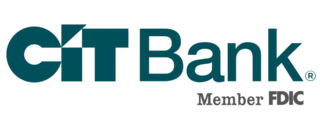Money Market Account vs. High-Yield Savings Account
Securing a higher interest rate for your savings is a critical component of growing your wealth and boosting your emergency fund. Leaving your cash in a brick-and-mortar bank’s savings account can impede those goals and result in slower growth. That’s because the average annual percentage yield (APY) for a traditional savings account in the U.S. is a paltry 0.47%.
Fortunately, today there’s no shortage of account options offering competitive APYs. But choosing the right one for you depends on several factors. In this guide, we discuss two popular options — money market accounts and high-yield savings accounts — that provide vastly better APYs than even the best savings accounts.
Read on to learn about the differences between money market accounts and high-yield savings accounts so you can make a more informed decision about which choice best suits your needs.
What is a money market account?
- Better-than-average APYs
- Can provide checks, debit cards and ATM access
- Offered at all types of financial institutions.
- Typically lower APYs than high-yield savings accounts
- Can have minimum opening deposits and balance requirements
- May have withdrawal limits
A money market account, or MMA, is a type of savings vehicle that’s ideal for short-term savings goals. Like other deposit accounts, money market accounts are insured by the Federal Deposit Insurance Corporation (FDIC) and the National Credit Union Administration (NCUA), meaning balances are protected up to $250,000 per depositor. Offered by both banks and credit unions, these accounts pay higher interest rates than regular savings accounts. This holds true regardless of the Federal Reserve’s monetary policy.
Because they feature variable interest rates — unlike certificates of deposit (CDs), for example — money market account rates can change without notice to the customer. However, unlike CDs, they offer more liquidity if you need to quickly access your money. (CDs impose penalties if you take an early withdrawal.)
Account holders have the ability to write checks and use ATM cards, which makes them ideal replacements for traditional savings and checking accounts that offer inferior APYs. However, some financial institutions may impose limits on the number of withdrawals customers can make from a money market account each month.
Compared to traditional savings and checking accounts, money market accounts typically require higher opening deposits and minimum balances to be eligible for the highest APYs. Financial institutions offering these accounts also often charge customers account fees if certain minimum balances aren’t maintained.
It is important to not confuse money market accounts with money market funds, the latter of which are a type of mutual fund that invests in short-term debt securities like U.S. Treasury bills.
What is a high-yield savings account?
- Better-than-average APYs
- Typically better APYs than money market accounts
- Low-to-no minimum balance requirements
- Fewer withdrawal options
- May have withdrawal limits
- No access to physical branches
Another type of savings vehicle, high-yield savings accounts offer customers the option of growing their money at little to no risk while receiving higher yields than most accounts offer. Like money market accounts, high-yield savings accounts are FDIC- and NCUA-insured, protecting savings up to $250,000 per depositor, have variable interest rates and are offered by both banks and credit unions. Additionally, these types of accounts may have restrictions on the number of withdrawals you can make each month.
Unlike money market accounts, high-yield savings accounts often don’t require minimum balances in order to take advantage of the highest APYs offered, and the banks and credit unions offering them to customers typically don’t charge monthly maintenance fees.
These accounts are generally offered by online-only banks. Because of this, the financial institutions offering them are able to pass along the savings they receive from not maintaining physical locations in the form of higher APYs to their customers. However, because they are usually offered by online-only banks and credit unions, high-yield savings accounts have fewer withdrawal options for account holders, including limited ATM networks and the inability to write checks.
Read our guide to the best high-yield savings accounts to learn more.
Money market account vs. high-yield savings account
Like any personal finance decision, choosing between a money market account and high-yield savings account should be determined by which one best suits your individual needs. That decision can be aided by better understanding some key differences between the two types of deposit accounts.
Minimum balance
Deciding between the two account types may come down to how much money you plan to fund the account with and the balance you’re able to maintain. Whereas the best high-yield savings accounts typically don’t have initial deposit requirements or minimum balance requirements, in order to get the most competitive rates available from a money market account, you may need to meet certain minimums. For example, to obtain the highest APY offered by CFG Bank, you’ll have to make an initial deposit of $1,000 and maintain a minimum account balance of $1,000.
Additionally, while most HYSAs don’t require those minimums, some offer bonuses if you’re able to meet a certain initial minimum deposit amount or set up a recurring direct deposit. Those bonuses can be as much as several hundred dollars.
Ease of access
According to a 2023 Dyanta Banking Behaviors Survey, 40% of respondents routinely make withdrawals to cover fixed bills (e.g., rent), and 38% do so for recurring variable expenses (e.g., food). If you aren’t using online bill pay or taking advantage of the best cash back credit cards to cover your day-to-day expenses, you may fall into this camp.
In that case, a money market account may be better suited for you as they provide easier access to your funds. Whereas high-yield savings often have limited ATM access, money market accounts generally offer unlimited ATM withdrawals, allow you to make debit card payments and write checks — a feature you can’t get with a high-yield savings account.
Sample APYs
Currently, the best money market accounts and high-yield savings accounts offer APYs in the range of 4% to 6%, which is nearly 11 times higher than the yields offered by traditional deposit accounts. To illustrate the difference this can make, consider the following:
- MMA or HYSA: That same $5,000 deposit in an account providing an APY of 5% with interest compounded daily and paid monthly will see your balance grow to $5,250 at the end of one year.
- Traditional savings account: A $5,000 deposit in an account providing an APY of 0.47% with interest compounded daily and paid monthly will see your balance grow to $5,023.50 at the end of one year.
But when it comes to money market accounts versus high-yield savings accounts, the latter has a slight edge. While high-yield savings accounts don’t allow you to directly spend the money in your account, they reward customers with high interest rates that often surpass those offered by money market accounts.
Summary of Money's Money Market vs. High-Yield Savings Account
If you’re looking to maximize the yield on your savings, options like money market accounts and high-yield savings offer exponential growth opportunities when compared to run-of-the-mill bank savings accounts. Regardless of the Fed’s interest rate policy, that is likely to always be the case. In addition to higher APYs, these types of deposit accounts offer the same safety as accounts covered by NCUA and FDIC insurance.
Which account best suits you depends on your personal needs, including whether you need easy access to your money, check-writing abilities or a low minimum deposit requirement. Depending on whether you need easy access to your funds, check-writing abilities or are able to meet minimum deposit requirements or higher minimum balances, the type of account that better suits you will be determined by your personal financial goal. But as far as financial products go, it’s hard to find a better combination of high APYs and low-to-no risk than what you’ll get with either account type.





